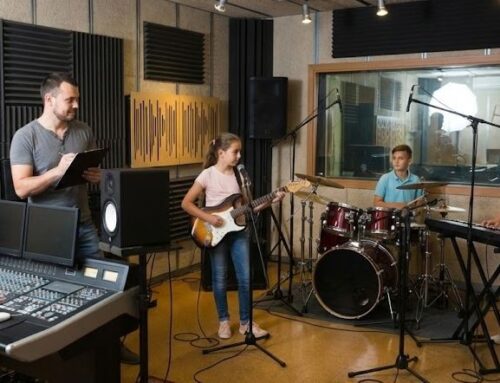Are you ready to take your musical abilities to the next level? Ear training is a fundamental skill that every musician should master. Whether you’re a beginner or an experienced player, developing a good musical ear can dramatically enhance your overall musicianship. In this comprehensive guide, we’ll explore the ins and outs of ear training, why it’s important, and how you can start incorporating it into your practice routine today.
What is Ear Training?
Ear training is the process of developing your ability to recognize and understand various musical elements just by hearing them. This includes identifying intervals, chords, rhythms, melodies, and other components of music without the need for a visual aid. Essentially, it’s about training your ears to become as skilled as your fingers when playing an instrument.
At Capstone Music Burlington, we’re all about elevating your musical skills. With a range of instruments or vocal lessons to choose from, you’re sure to develop your ear for music, and hit all the right notes. Join us!
Why is Ear Training Important?
- Improved Musicality: Ear training enhances your ability to play music more expressively and intuitively. You’ll be able to anticipate musical changes and play more fluidly.
- Better Intonation: For vocalists and instrumentalists alike, ear training helps in achieving better pitch accuracy and intonation.
- Enhanced Improvisation: Musicians with well-trained ears can improvise more effectively, as they can predict and harmonize with the music on the fly.
- Efficient Learning: Learning new pieces becomes faster and easier when you can quickly identify intervals, chords, and melodies by ear.
- Communication: In group settings, such as bands or orchestras, having a good ear improves your ability to communicate and blend with other musicians.
Basic Elements of Ear Training
- Intervals: The distance between two notes. Practice identifying and singing intervals, both ascending and descending.
- Chords: Learn to recognize major, minor, diminished, and augmented chords, as well as more complex harmonies.
- Rhythms: Develop your ability to accurately hear and reproduce different rhythmic patterns.
- Melodies: Practice transcribing melodies by ear and understanding their structure.
- Scales: Recognize different scales and modes by ear, which is crucial for improvisation and composition.
Effective Ear Training Exercises
- Interval Recognition: Use online tools or apps that play random intervals. Try to identify them without looking at your instrument. Start with simple intervals (like major and minor seconds) and gradually move to more complex ones.
- Chord Identification: Play recordings of different chords and try to identify their types. You can also practice this on your instrument by playing a chord and singing each note individually.
- Melodic Dictation: Listen to short melodies and write them down. Start with simple tunes and progress to more complex pieces.
- Rhythmic Training: Clap back rhythms that you hear. Use a metronome to help keep time and gradually increase the complexity of the rhythms.
- Singing Exercises: Sing scales, arpeggios, and intervals. This helps internalize pitch relationships and improves your overall musical ear.
Tools and Resources for Ear Training
- Apps and Software: There are many excellent ear training apps available, such as Teoria, EarMaster, and Tenuto. These provide interactive exercises and instant feedback.
- Online Courses: Websites like Coursera and Udemy offer ear training courses that cover everything from basics to advanced techniques.
- Books: “The Musician’s Guide to Ear Training and Sight Singing” by Joel Phillips and Paul Murphy is a great resource for structured learning.
- Private Lessons: Find the best music school nearby that offers music lessons, which will incorporate ear training lessons that will help develop this extraordinary skill.
Integrating Ear Training into Your Practice Routine
- Daily Practice: Dedicate at least 10-15 minutes of your practice time to ear training exercises.
- Variety: Mix up your exercises to keep things interesting. Combine interval training with melodic dictation and chord identification.
- Real-World Application: Try to apply what you’ve learned in your regular practice sessions. For example, when learning a new piece, try to figure out the melody or chords by ear before looking at the sheet music.
- Consistency: Like any skill, consistency is key. Regular, focused practice will yield the best results over time.
Ear Training to Elevate Your Musical Talents
Ear training is a crucial aspect of becoming a well-rounded musician. It enhances your ability to understand and interpret music on a deeper level, making your playing more expressive and intuitive. Top music instructors are dedicated to helping you develop this essential skill through our comprehensive ear training programs. With the right training, you can work towards mastering the art of ear training and elevate your musical journey.






